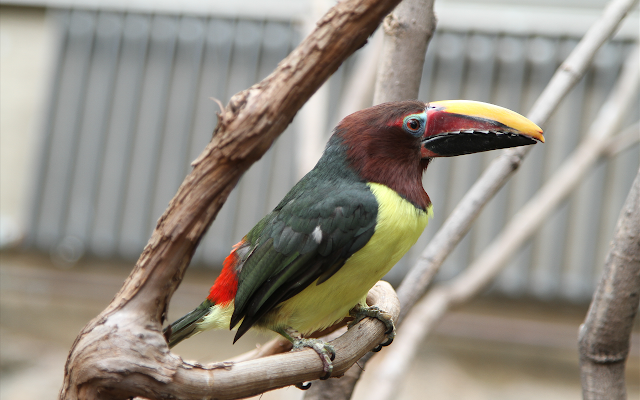20 facts about the Green Aracari:
The Green Aracari is a small species of toucan found in Central and South America.
They are known for their bright green plumage and striking red breast.
Green Aracaris are cavity nesters, meaning they breed and raise young in tree hollows.
They are social birds and often travel in flocks of up to 20 individuals.
Green Aracaris are frugivores, meaning their diet primarily consists of fruit.
They are also known to feed on insects, spiders, and small lizards.
The Green Aracari has a unique beak that is long and thin, perfect for reaching into small spaces to extract insects and fruit.
The beak is also serrated at the edges, which helps the bird to cut and tear through tough fruit skins.
Green Aracaris are monogamous, meaning they mate for life.
The female lays 2-4 eggs in each clutch, which are incubated by both parents for around 16 days.
Both parents also take turns feeding and caring for the chicks until they are ready to fledge the nest.
The Green Aracari is not considered to be a threatened species, and their populations are thought to be stable.
They are often kept as pets, but require specialized care and a large amount of space to thrive.
Green Aracaris are known for their acrobatic ability, and are capable of hanging upside down from branches to reach fruit.
They have a unique vocalization that sounds like a "caw caw" or a "wak wak."
Green Aracaris have a lifespan of around 15 years in the wild, and up to 20 years in captivity.
They have been known to hybridize with other species of toucan, producing offspring with unique plumage patterns.
The Green Aracari is considered to be a "near-passerine" bird, meaning it is closely related to the passerine birds (perching birds) but has some distinct differences in anatomy and behavior.
They are sometimes referred to as the "smiling toucan" because of their distinctive facial markings that look like a smile.
Green Aracaris play an important role in the ecosystem as seed dispersers, helping to spread seeds from the fruit they consume to different parts of the forest.





0 Comments